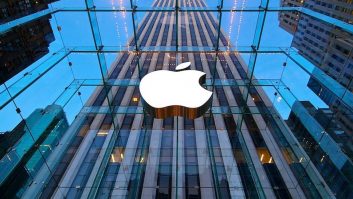In today’s ever-evolving technology and competitive landscape, media enterprises face tremendous challenges as they adapt their operations to stay on the leading edge of content delivery. Linear services and traditional television are still important, of course, but now consumers control what they watch and when they watch it. And they’re demanding access on an ever-growing range of devices from smart phones to tablets to internet TV.
For traditional broadcasters, adapting to multi-screen and multi-platform delivery can be costly, bandwidth-intensive, and difficult to monetise. Plus, a whole new generation of pure-play OTT providers are turning up the competitive pressure.
Throughout the digital revolution, advanced video compression and content delivery technologies have played a key role in helping broadcasters provide a premium viewing experience for their customers. At IBC2014, we expect many of these broadcasters to be looking for compression solutions that can effectively address the challenges of multi-platform delivery.
Building a modern live broadcast infrastructure requires much more than simply adding OTT capabilities to a traditional linear broadcast subsystem. In order to support traditional as well as new-media broadcasters and pay-TV operators, a video infrastructure must be all-encompassing and provide seamless support for many different codecs, networks, and devices. Ideally, this approach combines premium encoding capabilities with dense transcoding for turnaround services, with an emphasis on the following criteria:
l Flexibility to transcode and deliver OTT and IPTV services to a constantly evolving ecosystem of devices and applications, in all necessary output formats
l Continued high-quality delivery for traditional broadcasts over cable, DTH, and DTTV
l A transcoding workflow that can be adapted easily by adding ABR encoding profiles, adding or removing channels as required, changing resolutions, or upgrading to new and emerging codecs such as HEVC
l High-performance compression, multiplexing, and ad insertion, premium encoding capabilities and dense transcoding
l Robust channel processing capabilities for branding, ad insertion, and audio management including loudness control
In today’s media environments, video compression resources may be running on physical hardware appliances, virtual servers, or in the cloud. At Thomson Video Networks, we propose a hybrid strategy that offers the best of all worlds.
This approach combines video-optimised hardware solutions with software-based encoding that runs on lower-cost and generic physical servers, virtualised servers, a cloud infrastructure, or some combination of the four. As a result, network operators benefit from the advantages of virtualisation and cloud computing without having to compromise on quality of service, SLAs, video quality, and any of their other critical operational standards. Plus, they’re able to choose the mix of cloud or on-premise technologies that are most appropriate for a given project or service.
A video infrastructure that meets these requirements provides everything broadcasters need for profitable and convergent multi-platform video delivery, while maintaining the core linear operation. At IBC2014, Thomson Video Networks is presenting Behind Every Screen – an approach specifically designed for smooth integration of both multi-screen and broadcast services with optimised operational costs.







